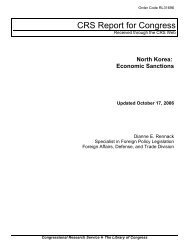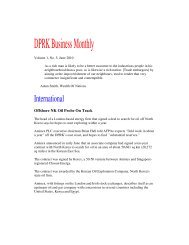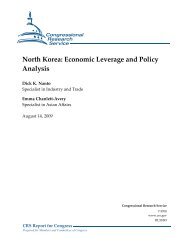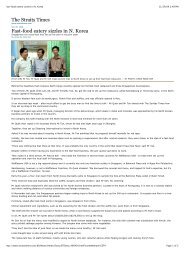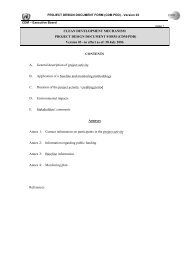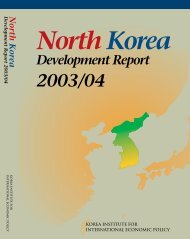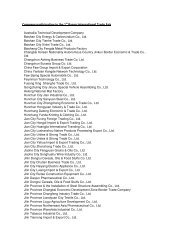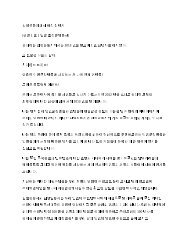North Korean Policy Elites - Defense Technical Information Center
North Korean Policy Elites - Defense Technical Information Center
North Korean Policy Elites - Defense Technical Information Center
You also want an ePaper? Increase the reach of your titles
YUMPU automatically turns print PDFs into web optimized ePapers that Google loves.
At the second echelon of power, Kim Chong-il has adopted divide-and-rule tactics.<br />
Through compartmentalization, power has been dispersed among various agencies and interdepartmental<br />
competition has been intensified. At the apex of national authority, Kim alone has<br />
final and absolute say on major policies. 40 This strategy has apparently heightened Kim’s<br />
political autonomy from within. Cooperation, bargaining, and coordination among the various<br />
departments is possible only through Kim Chong-il. Therefore, if departments (or individuals)<br />
want to win favors and enjoy more power, they have to forge a close relationship with Kim,<br />
competing among themselves to demonstrate their loyalty to the leader.<br />
As part of Kim Chong-il’s hub-and-spoke decision-making style, he often<br />
circumnavigates direct chains of command in order to give him alternate reservoirs of<br />
information. This allows him to access information that may otherwise be denied through formal<br />
channels. It also allows him to keep tabs on the senior leadership. As was outlined above, he<br />
does this by forming alliances within critical second echelon institutions inside the military and<br />
party apparatuses. He also does this within the foreign policy apparatus. Kim by-passes the<br />
Minister of Foreign Affairs, Paek Nam-sun, to seek advice and guidance from key protégés<br />
within the ministry, 41 which keeps other senior leaders off balance and prevents them from using<br />
their bureaucracy as a breeding ground for anti-regime cabals and plots.<br />
Finally, a system of privileges exists in <strong>North</strong> Korea to ensure loyalty to the regime. Kim<br />
Chong-il has instituted a program, run out of his personal secretariat, of systematically rewarding<br />
close allies with money and gifts. This has created a system whereby competition among the<br />
elites focuses more on personal favors than on society’s need for economic and political reform.<br />
This in effect blunts the policymaking process since elites are reticent to support initiatives (e.g.,<br />
reforms) that would jeopardize their careers. Therefore, the regime is left with a narrow range of<br />
policy alternatives to address both domestic and international problems. 42<br />
40 Under the Kim Il-sung leadership, interdepartmental coordination was stressed, rather than competition.<br />
Influential figures were often appointed to top positions in two or more organizations to facilitate horizontal<br />
coordination among different agencies. Ryoo Kihl-jae, “<strong>North</strong> <strong>Korean</strong> Regime Under Kim Chong-il’s Leadership:<br />
Changes in Systems and Politics,” Vantage Point, 20 (5), 1997.<br />
41 The Ministry of Foreign Affairs’ USA Bureau and Office of Counselors are especially influential. Key members<br />
of these organizations include Chang Chong-chon (director of the USA Bureau), Pak Myong-kuk, Kim Kye-kwan,<br />
and Ambassador Yi Yong-ho.<br />
42 There are some indications that elements within the second and third generations may be more flexible in their<br />
view of reform, provided it does not severely impact their lives. Discussion with South <strong>Korean</strong> analysts and <strong>North</strong><br />
<strong>Korean</strong> defectors.<br />
II-27



